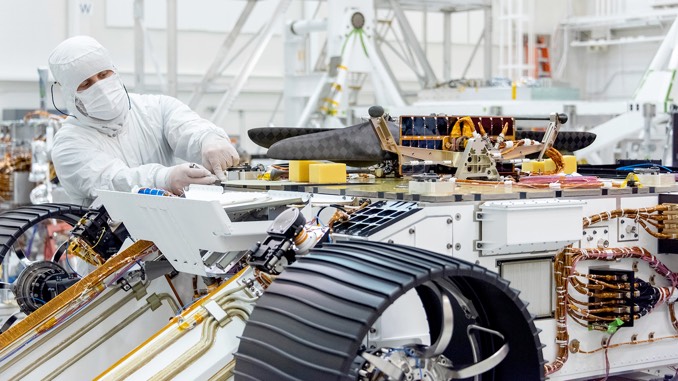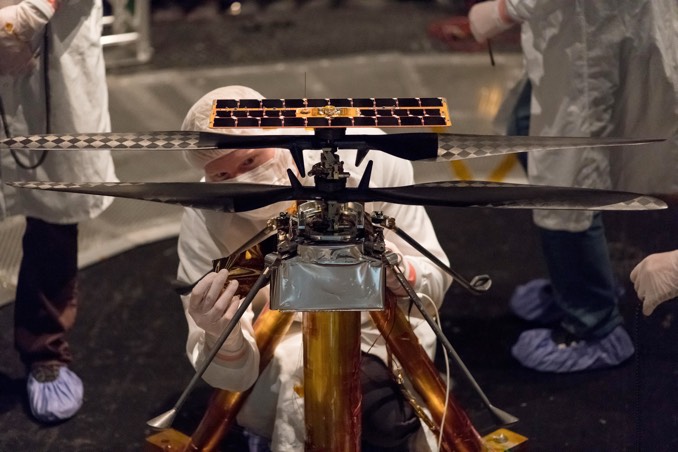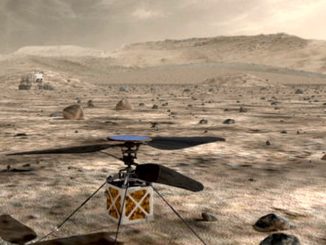
NASA’s twin-rotor Mars Helicopter and its protective carrier have been attached to the belly of the agency’s Mars 2020 rover, now in final assembly at the Jet Propulsion Laboratory in Pasadena, California. The helicopter, expected to be the first aircraft to fly on another world, will remain encapsulated until after landing and deployed to the surface in Jezero Crater.
The solar-powered helicopter is a technology demonstrator and as such carries no science instruments. But if it works, second-generation helicopters could be added to future Mars missions, carrying instruments over areas beyond the reach of rovers or stationary landers, making close-range observations of difficult-to-reach targets like cliffs, caves and deep craters possible.
“Our job is to prove that autonomous, controlled flight can be executed in the extremely thin Martian atmosphere,” said MiMi Aung, the Mars Helicopter project manager at JPL. “Since our helicopter is designed as a flight test of experimental technology, it carries no science instruments. But if we prove powered flight on Mars can work, we look forward to the day when Mars helicopters can play an important role in future explorations of the Red Planet.”

The Mars 2020 rover is scheduled for launch from Cape Canaveral, Florida, in July 2020. Landing in Jezero Crater is expected on 18 February 2021.
“With this joining of two great spacecraft, I can say definitively that all the pieces are in place for a historic mission of exploration,” said Thomas Zurbuchen, NASA’s director of science operations. “Together, Mars 2020 and the Mars Helicopter will help define the future of science and exploration of the Red Planet for decades to come.”



